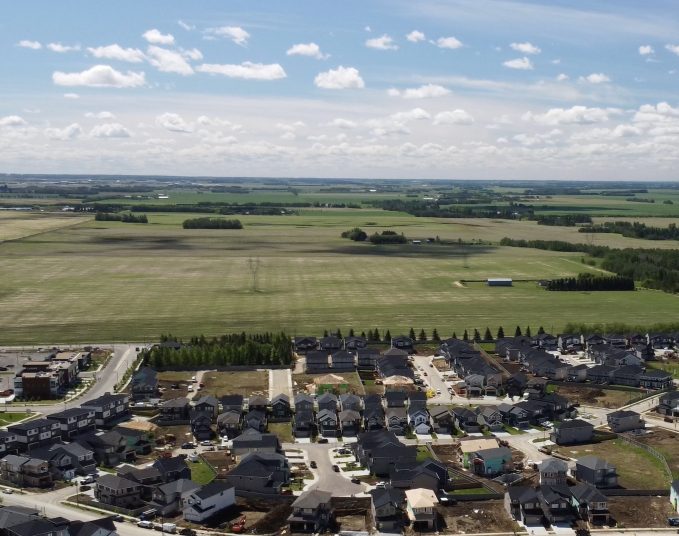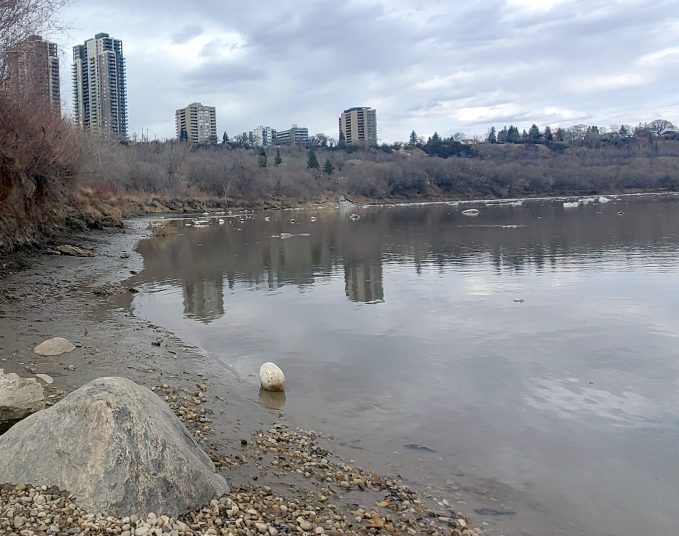When an out-of-control wildfire tore its way through the town of Jasper at the end of last month, Albertans received the latest reminder of the not-so-remote dangers posed by our province’s ever-worsening forest fire seasons. Although it wasn’t the first mega-fire that’s been linked to Alberta’s shorter winters, hotter summers and questionable provincial wildfire management policies — the 2016 Fort McMurray fire is still the costliest natural disaster in Canadian history — the images of Jasper’s burned-down buildings were a tangible foil to the hazy skies often associated with wildfire season.
And to anyone living within a few kilometres of the largest urban park in Canada — i.e. Edmonton’s river valley — a reasonable follow-up question might have been: Wait, could something like that happen here?
The short answer is, Yes, it could definitely happen here. The honest answer is that it already is.
Edmontonians might remember the April 2023 fire that made its way from the River Valley up onto the patio of the Courtyard by Marriot on Jasper Avenue. The fire ultimately resulted in minimal damage and some eye-catching Twitter footage, but it was also a reminder that the River Valley is 1) quite close to the city itself and 2) under the right conditions, quite flammable. In fact, over 145 wildfires had been reported in the Edmonton area as of April this year, a figure which prompted Edmonton Fire Rescue Services to encourage homeowners along the River Valley to keep an emergency kit ready in case of evacuation.
Fortunately, the River Valley also has ecological safeguards that minimize any potential fire risk.
“The fact that much of the River Valley has [the North Saskatchewan River] running through it — and even the ravines have creeks running through them — keeps the overall River Valley ravine system cooler and wetter than park space outside of the River Valley,” says Harvey Voogd, Vice President of the North Saskatchewan River Valley Conservation Society. “But moving forward, as things become more extreme because of climate change — which means that when it rains, it’s going to rain more, but also when it’s dry, it’s going to be much hotter and drier — that raises the potential fire risk in the river valley.”
But while wildfires might not be a particularly significant risk in the river valley, the carnage of recent summers has turned up the heat on conversations about the management of public lands more generally. In the rural context, there have been increasing calls — most recently from the union representing seasonal firefighters — for the provincial government to either beef up its fire suppression budget or relinquish that responsibility to the federal government.
The push for more federal involvement in the management of public lands is similarly being felt in cities, particularly with the announcement of the National Urban Parks Initiative. First introduced as part of Budget 2021, the initiative set aside $130 million in federal funds to establish six urban national parks in cities across the country. Details about what an urban national park might actually look like have, up until now, been sparse, apart from a hand-over-heart commitment from the federal government to “conserving nature, connecting people with nature and advancing reconciliation with Indigenous peoples.” Critics cite the initiative as another instance of unnecessary federal meddling, but proponents are keen to see the River Valley included in the first round of selected sites. But the Alberta government’s Bill 204, passed in April, gives the province the power to oversee any negotiations between municipal governments and the feds when it comes to national urban parks.
“By having the federal government involved, you create a partner who has bigger resources than the Province or the City,” says Voogd, pointing to the federal government’s fiscal powers and experience managing national parks. “That is why [the North Saskatchewan River Valley Conservation Society] supports the concept. Because we think such a collaboration would create enduring support and protection for Edmonton’s ribbon of green.
“And not just Edmonton. We’d like to see that national urban park start from Devon and go downstream from there, including Fort Saskatchewan and beyond.”
The City’s National Urban Parks program moved to its planning stage last year, but council has yet to indicate if it will lobby the federal government to have the River Valley earmarked for the initiative.
For self-proclaimed defenders of the River Valley like Voogd, their watchfulness over the city’s green space is relentless, whether the risk is posed by rising climates, insufficient resources or the looming spectre of development.
“One hundred years ago most of the River Valley was industrial activity and now there’s very little of that left,” Voogd says, reflecting on the history quite literally hidden under sections of the River Valley. “What exists now didn’t happen by accident. It happened by citizens and past councils deciding that it was important to protect this area and make it accessible green space for all citizens.
“We need to build on the legacy of our ancestors — both in the last 100 years and prior to settlers being here — and figure out how to make [the River Valley] a treasure for Edmontonians today and forever in the future.”
Savvy AF. Blunt AF. Edmonton AF.




